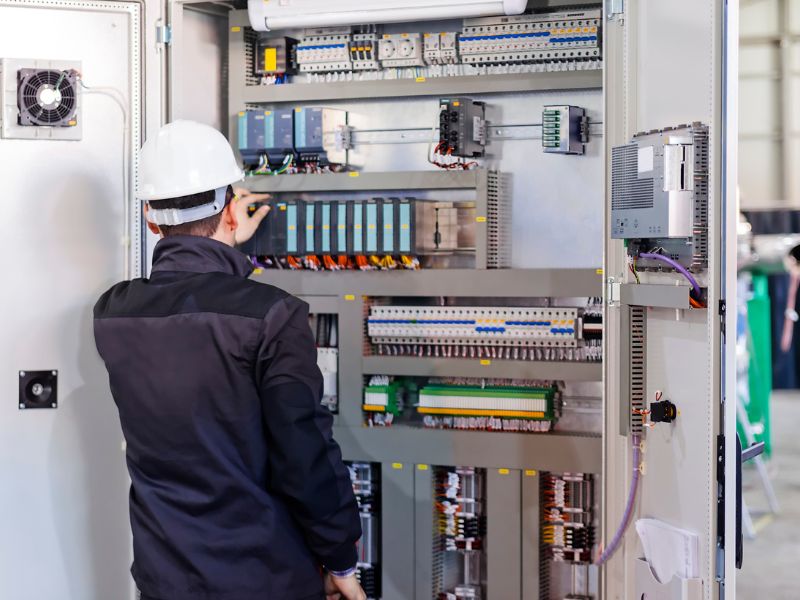Industrial process control – which accessories to invest in?
What accessories help in the industrial process control?
There is a vast variety of different accessories used to control the industrial process. Among the most notable Programmable Logic Controllers, and signal towers shall be named.
PLC – Programmable Logic Controllers
Programmable Logic Controller, PLC in short, is a microprocessor device commonly used to control individual machines, machine units, and the entirety of the technological processes. It is equipped with an appropriate number of input circuits, which are used to collect the information about such variables as:
- state of the facility,
- service requests,
- number and type of output circuits connected with:
- actuators,
- signaling elements,
- data transmission.
For the Programmable Logic Controller to perform its main function, proper programming needs to be implemented in the device’s memory. In order to ensure adequate performance, the process of implementation is usually repeated periodically. PLC form a substantial and highly diversified group of products, from very simple programmable relays to extremely complex equipment with functionality similar to that of advanced industrial computers. Based on their built, Programmable Logic Controllers can be further divided into modular controllers and compact controllers.
Modular controllers are controllers which can be found embedded in industrial applications utilized for automation of industrial machines, assembly lines, as well as other sectors of production. Compact controllers, on the other hand, are usually implemented in various home appliances, drives for entrance gates, lighting control systems, and, additionally, sewage treatment plants together with pumping stations.

Signal tower
Signal tower is a type of specialized device which provides visual and, if requested, audible indicators of a machine state or process event directly to responsible personnel – machine operators, technicians, production managers, and factory staff. Signal towers are used on equipment in industrial manufacturing and process control environments. They can be utilized with a vast variety of machines and processes. To indicate machine state conditions they apply color coding. The three basic codes are:
- green, which indicates normal machine or process operation,
- yellow, which is a warning signal deployed in situations such as overheating or in over-pressure conditions,
- red, which indicates failure conditions, for example machine fault or a sort of emergency.
Signal towers available in CS-Lab Shop’s assortment are characterized by their aesthetic design which provides good heat dissipation, and high efficiency provided by the layout of internal electronic components. Among other attributes of the device, the ones deserving special attention are:
- high brightness LED chip,
- low thermal resistance,
- wide-angle,
- concentrated color area,
- low brightness decay with long lifespan,
- buzzer with a volume louder than 85 dB.

Stack lights Signal Tower 24V
Why is it worth it to invest in the accessories used in the industrial process control?
The large number of intermediate products during the production processes often deems it impossible to manually control everything thoroughly. For most parts even the final products cannot be properly checked. For that reason the method of selective production control is used. It works relatively well and helps detect many errors and anomalies. Better results, however, can be achieved by implementing solutions that use industrial automation technologies. Investing in the accessories used in the industrial process control help avoid occurences such as:
- losses related to the continuation of work on a faulty component,
- delays in production,
- losses related to complaints about finished products.
Automatized control of the industrial process with the use of proper accessories allows to completely eliminate human error. It can also increase the prodution efficiency, improve the quality of manufactured goods, and reduce the total time of finalizing the process of creating a product.



